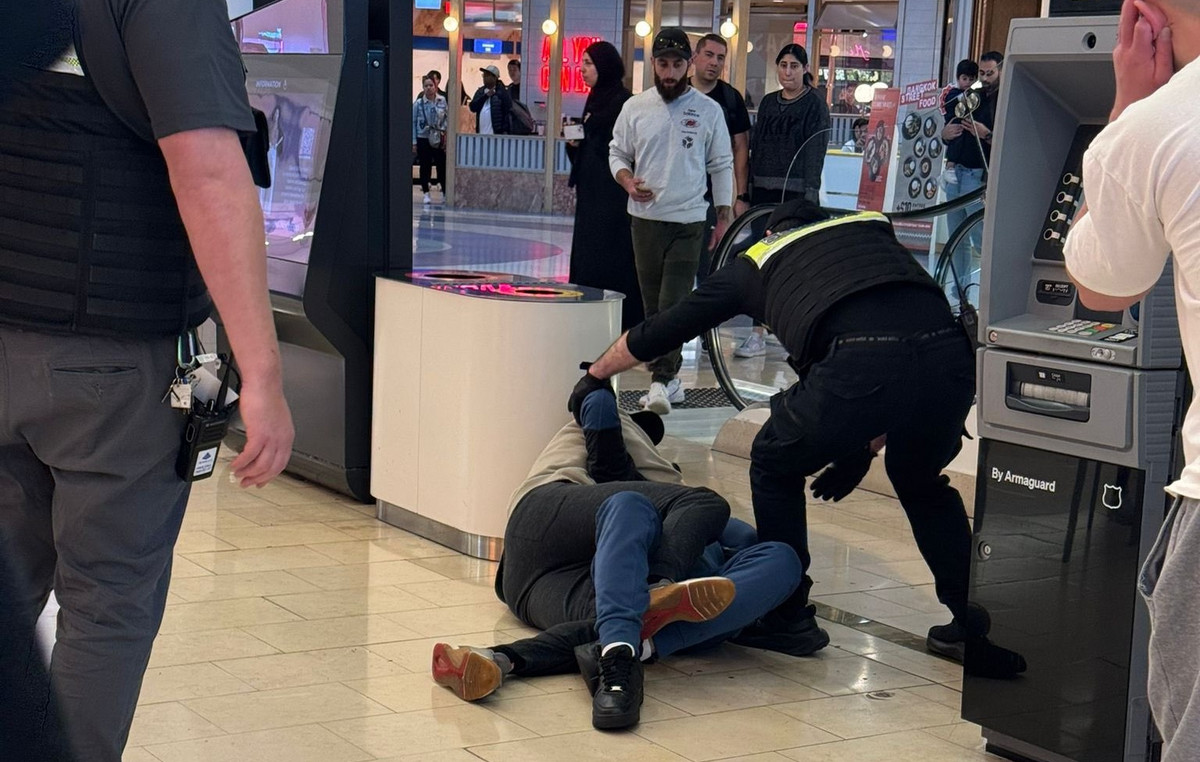The main mode of transmission of monkey pox a disease also known as monkeypox occurs through direct person-to-person contact, called skin-to-skin.
Transmission can happen from direct contact with skin lesions, crusts or body fluids of an infected person, by touching objects, fabrics (clothes, sheets or towels) and surfaces that have been used by someone with the disease, in addition to contact with respiratory secretions.
The greatest risk of exposure is among healthcare professionals, family members and intimate partners of someone who has the disease.
The virus is also transmitted during intimate contact, including: oral, anal and vaginal sex or touching the genitals or anus of a person with monkeypox.
According to the US Centers for Disease Control and Prevention (CDC), transmission also occurs through hugging, massaging, and kissing, prolonged personal contact, and touching tissues and objects during sex that have been used by an infected person that has not been cleaned, such as bedding, towels, fetish equipment, and sex toys.
According to the Ministry of Health, a person can transmit the disease from the moment symptoms begin, such as a rash, which are sores on the skin, fever, body and head aches, enlarged lymph nodes – or sore throats. , chills and weakness.
the period of transmission occurs until the lesions heal completely and a new layer of skin forms.
The ministry recommends that all people with compatible symptoms of monkeypox should seek medical attention immediately and adopt recommended isolation measures. The diagnosis is made in a laboratory way, by molecular testing or genetic sequencing. The samples are sent to eight reference laboratories in Brazil.
So far, according to the Ministry of Health, Brazil has recorded 3,450 confirmed cases of monkeypox.
The disease was recorded in the states of São Paulo (2,279), Rio de Janeiro (403), Minas Gerais (159), Federal District (141), Paraná (83), Goiás (136), Bahia (29), Ceará (29). ), Rio Grande do Norte (14), Espírito Santo (8), Pernambuco (19), Tocantins (1), Maranhão (2), Alagoas (1), Acre (1), Amazonas (15), Pará (4) , Paraíba (1), Piauí (2), Rio Grande do Sul (54), Mato Grosso (13), Mato Grosso do Sul (12), and Santa Catarina (44).
How to know if a skin lesion could be a sign of the disease
The disease, in most cases, progresses without complications and the signs and symptoms last from two to four weeks. Clinical manifestations usually include skin lesions in the form of blisters or sores that can appear on different parts of the body, such as the face, hands, feet, eyes, mouth or genitals.
However, the current outbreak of the disease has presented different epidemiological characteristics, with symptoms that can be quite mild, which can make it difficult and delay the proper diagnosis.
In the most common documented form of the disease, symptoms may appear from the seventh day onwards with a sudden and intense fever. Signs such as headache, nausea, exhaustion, tiredness and especially the appearance of swollen glands are common, which can happen both in the neck and in the axillary region as well as in the genital part.
The manifestation on the skin occurs between one and three days after the initial symptoms. The signs go through different stages: macula (small spots), papule (small pimple-like sores), vesicle (small blisters), pustule (bubble with the presence of pus) and crust (which are the healing shells).
In the typical clinical picture of the disease, the skin lesions form blisters in different parts of the body. However, symptoms caused by monkeypox in the current outbreak have varied greatly from one person to another, according to infectious disease specialists.
In some patients, the sores may only appear in the genital or anus area and do not spread throughout the body. In others, it is common to identify a single lesion (see image ).

Infectologists point out that in the current outbreak, unlike the initial description of the disease in Africa, the sores can also appear at different stages of development. In addition, there are reports of lesions appearing before the onset of fever, malaise and other symptoms of the disease.
“The clinical presentation of monkeypox in the current outbreak is quite varied. There are patients with a single lesion, with multiple lesions, restricted to the genital region or with lesions on the whole body. Lesions are manifesting asynchronously as well. In the previous characteristic, they were all in the same phase of evolution, when one entered the phase of forming crusts, they all entered too”, explains infectious disease doctor Mirian Dal Ben, from Hospital Sírio-Libanês, in São Paulo.
THE correlation between the symptom and the possibility of monkeypox must be performed by a professional of health.
In the consultation, the doctor considers epidemiological information such as contact with suspected or confirmed cases of the disease and a history of intimate contact with casual partners before symptomatic manifestation. Based on these records collected during the consultation, the specialist will be able to order a diagnostic test.
monkeypox diagnosis
The sample to be analyzed should preferably be collected from the secretions of the lesions. However, if they are already dry, samples of the formed crusts should be sent for study.
In cases where patients do not have skin lesions, a sample from the mouth and throat (oropharynx) can be collected using a swab (swab), similar to that used in the diagnosis of Covid-19, or anal samples. or genital.
The diagnosis of monkeypox is performed in a laboratory way, by molecular testing or genetic sequencing.
Molecular diagnostics (technically called RT-PCR) is considered the gold standard technique for virus detection. The method allows the identification of the genetic material of a microorganism and has been widely used in the diagnosis of SARS-CoV-2, for example, in the Covid-19 pandemic.
Genetic sequencing is a more complex technique, associated with the identification of viral DNA bases. With genetic mapping, it is possible to compare the virus genome with others available in databases, for example.
Source: CNN Brasil





